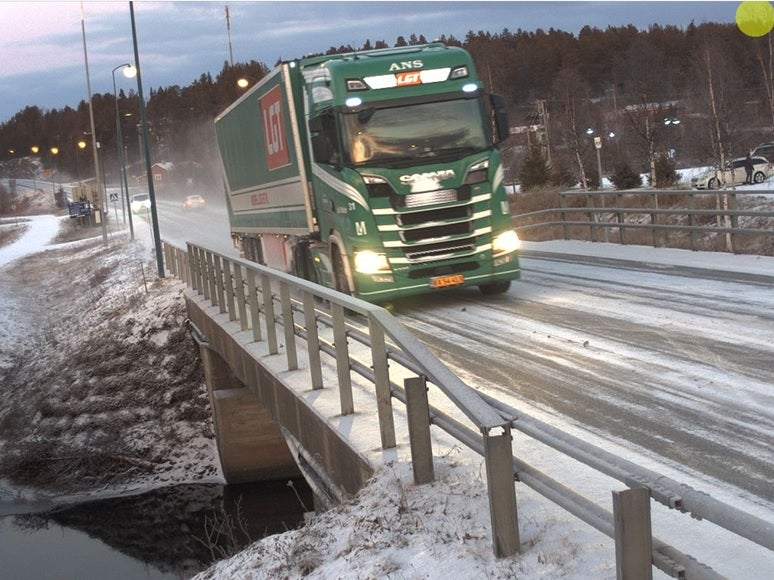Road pavements are structures with limited lifetime. They are designed to withstand a specific traffic loading. If a road section was not designed for heavy axle loads, as many rural roads are not, increased heavy traffic can significantly shorten their expected lifetime. To learn more about the impact of traffic on the road condition and on new future methods in transport, a special project was set up in Finland.
Commissioned by the Finnish Transport Agency, Tampere University of Technology (TUT) and Roadscanners Ltd have built extensive structural monitoring systems at two sites, both located on the highway E8 in the municipality of Muonio, Finnish Lapland. Project is called Aurora.
Proving grounds
Aurora is a public test ecosystem created to ensure intelligent and automated transport as well as solutions for road maintenance and asset management to meet the requirements of all conditions. The public test area is open for all organisations interested. It allows gathering first-hand information on how to develop both the physical and digital infrastructure to serve the needs of high-performance future transportation. Aurora is the solution when you need intelligent transport to work safely in all conditions.
Companies Roadscanners and Cestel on E8 highway installed instrumentations which enables monitoring of structural responses during vehicle loading and prevailing conditions at different depths below the road surface. Combined with the truck weight information obtained from the SiWIM Weigh-In-Motion system installed in a nearby bridge the instrumentations will be primarily used for investigating the effect of seasonal variations on the mechanical behaviour of road structures. The loading effect of heavy trucks during different seasons, i.e. when the road structures are thawing in the spring, getting dry during the summer months, wetting again in early autumn and finally freezing as the winter starts.
Bridge technology
As mentioned, the Aurora project is test polygon for solutions in all kind of climate conditions. Bridge-Weigh-In-Motion system is one of the systems tested in snowy and cold arctic circle of Lapland (Finland). Quite usual is that temperatures are below -20ºC (-4ºF). Lowest measured temperature this winter on the measurement location was -37ºC (-34.6ºF), but that was not a stopper for the system, who was operating 24/7 without complications or any other difficulties. System can operate also in very warm conditions, up to 50ºC (122ºF).
To weigh vehicles in motion, Bridge-Weigh-In-Motion system uses instrumented existing bridges or culverts in the road network. As entirely portable, the system can be installed and configured in just a few hours, without any interfering in or even closing the traffic. From the structural point of view, most bridge types can be used for measurements, provided that certain limitations about the geometry, pavement conditions and user requirements are observed.
What can we do for better road infrastructure? What is proactive (preventative) asset management? How can we do that? With new road monitoring technologies as Bridge-Weigh-In-Motion system and ground penetrating radar are preventative and savings methods. SiWIM is monitoring and information system which use a bridge as weighing platform to collect the data. On base of the collected data various useful analyses can be done (Calculation of nominal axle load, Overloading analysis, Life expectancy of road pavement, Calculation of road layer thickness, Road damage calculation).
There are many factors that affect the condition of the roads and their lifespan – structural condition, functional condition, heavy vehicles using the road, traffic volume and climatic factors. In the future we should more often monitor the root causes of the road surface condition and bridge condition. We have the tools for that, such is Bridge-Weigh-In-Motion system.











